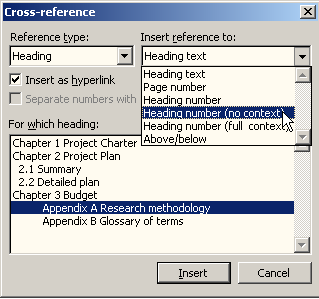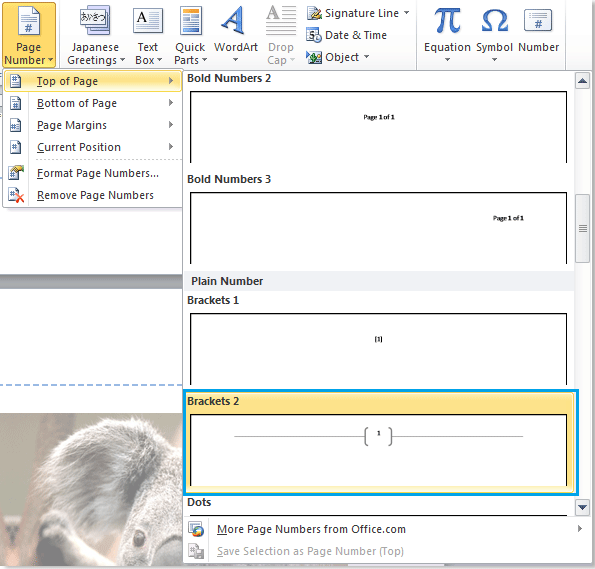Page No In Word
Check one checkbox to include the total number of pages with the page number in your document’s header or footer in Word for the web. If you’re not already in Editing view, click Edit Document Edit in Word for the web. Click Insert Page Numbers. You’ll see a gallery of page number layout options. How to create a TOC entry without a page number Word 2013 and later. In your document, create a table of contents, or use an existing table. Position the cursor at the location within the document where you want to put the TOC.
-->
Note
If you are a Small Business customer, find additional troubleshooting and learning resources at the Support for Small Business site.
Summary

Ms Word No Page Break
This article describes how to create table of contents (TOC) entries that contain no page number so that the entries don’t affect the numbering of the rest of the entries.
This article assumes that you understand how to create a table of contents in Microsoft Word. For more information about how to create a table of contents, see the following articles:
The following example shows table of contents entries that contain no page numbers. You can use the following method to prevent table of contents entries from having the same page number.
Note
In Word, hold down the CTRL key, and then select a table of contents entry to move to that page in the document. This works for both numbered and unnumbered TOC entries.
How to create a TOC entry without a page number
Word 2013 and later
In your document, create a table of contents, or use an existing table.
Position the cursor at the location within the document where you want to put the TOC.
Select the References tab.
In the Table of Contents group, select Table of Contents, and then select Custom Table of Contents from the list. Notice that the Print Preview display (Figure A) doesn't display Heading 4 (the style that we used for the annotations). This feature defaults to three levels, Heading 1, Heading 2, and Heading 3.
Figure A
To add the annotations to the TOC, select Options. In the dialog box that opens, enter 4 in the TOC level control to the right of Heading 4, and then select OK (see Figure B).
Note
Although you might consider removing levels 2 and 3 because Heading 2 and Heading 3 are in use, we recommend that you keep them because you might want to add them later, and not remember why the TOC doesn't update to show those levels.
Figure B
Add a level for the annotations.
Clear the Show page numbers check box (Figure C). Before you do this, notice that the preview now displays Heading 4.
Figure C
Note
Disabling page numbering disables it for the entire TOC.
Select OK to return to the document.
Note
Figure D shows the resulting TOC. All page numbers are gone. However, we want to remove the page number for only the annotation level. The default TOC doesn't include the annotations (Heading 4 text).
Figure D
How to change to a TOC entry that doesn't have a page number
Word 2013 and later
Select File > Options.
On the Display tab, select the Show all formatting marks check box, and then select OK.
Note
Next to the text that appears in the table of contents, you now see a TC field without a page number. The TC field resembles the following example:
Select the TC field. Make sure that you include the opening bracket and the closing bracket.
On the Insert tab, select Quick Parts, and then select Field.
Note
For information about how to use the Field dialog box for a table of contents entry that contains no page number, see steps 5 through 9 of the “How to create a TOC entry without a page number” section.
Select File > Word Options.
On the Display tab, clear the Show all formatting marks check box, and then select OK.
Select the existing table of contents.
Press F9 to update the table of contents.
If you receive the following message, select Update entire table, and then select OK.
Word is updating the table of contents. Select one of the following options:

References
For more information about how to use the Lead-in Emphasis feature to create a table of contents, see How to use style separators with heading style to generate a TOC in Word.
More information
Still need help? Go to Microsoft Community.
A title page is required for all APA Style papers. There are both student and professional versions of the title page. Students should use the student version of the title page unless their instructor or institution has requested they use the professional version. APA provides a student title page guide (PDF, 199KB) to assist students in creating their title pages.

How To Footer Page No In Word

Student title page
The student title page includes the paper title, author names (the byline), author affiliation, course number and name for which the paper is being submitted, instructor name, assignment due date, and page number, as shown in this example.
Title page setup is covered in Section 2.3 of the APA Publication Manual, Seventh Edition
Student papers do not include a running head unless requested by the instructor or institution.
How To Give Page No In Word
Follow the guidelines described next to format each element of the student title page.
Student title page element | Format | Example |
|---|---|---|
Paper title | Place the title three to four lines down from the top of the title page. Center it and type it in bold font. Capitalize major words of the title. Place the main title and any subtitle on separate double-spaced lines if desired. There is no maximum length for titles; however, keep titles focused and include key terms. | Impact of Gender on the Evaluation of Humor in Romantic Relationships |
Author names | Place one double-spaced blank line between the paper title and the author names. Center author names on their own line. If there are two authors, use the word “and” between authors; if there are three or more authors, place a comma between author names and use the word “and” before the final author name. | Cecily J. Sinclair and Adam Gonzaga |
Author affiliation | For a student paper, the affiliation is the institution where the student attends school. Include both the name of any department and the name of the college, university, or other institution, separated by a comma. Center the affiliation on the next double-spaced line after the author name(s). | Department of Psychology, University of Georgia |
Course number and name | Provide the course number as shown on instructional materials, followed by a colon and the course name. Center the course number and name on the next double-spaced line after the author affiliation. | PSY 201: Introduction to Psychology |
Instructor name | Provide the name of the instructor for the course using the format shown on instructional materials. Center the instructor name on the next double-spaced line after the course number and name. | Dr. Rowan J. Estes |
Assignment due date | Provide the due date for the assignment. Center the due date on the next double-spaced line after the instructor name. Use the date format commonly used in your country. | October 18, 2020 |
Use the page number 1 on the title page. Use the automatic page-numbering function of your word processing program to insert page numbers in the top right corner of the page header. | 1 |
Professional title page
The professional title page includes the paper title, author names (the byline), author affiliation(s), author note, running head, and page number, as shown in the following example.
Follow the guidelines described next to format each element of the professional title page.
Insert Page No In Word
Professional title page element | Format | Example |
|---|---|---|
Paper title | Place the title three to four lines down from the top of the title page. Center it and type it in bold font. Capitalize major words of the title. Place the main title and any subtitle on separate double-spaced lines if desired. There is no maximum length for titles; however, keep titles focused and include key terms. | Predict and Redirect: Prediction Errors Support Children’s Word Learning |
Author names | Place one double-spaced blank line between the paper title and the author names. Center author names on their own line. If there are two authors, use the word “and” between authors; if there are three or more authors, place a comma between author names and use the word “and” before the final author name. | Francesca Humboldt |
When different authors have different affiliations, use superscript numerals after author names to connect the names to the appropriate affiliation(s). If all authors have the same affiliation, superscript numerals are not used (see Section 2.3 of the Publication Manual for more on how to set up bylines and affiliations). | Tracy Reuter1, Arielle Borovsky2, and Casey Lew-Williams1 | |
Author affiliation | For a professional paper, the affiliation is the institution at which the research was conducted. Include both the name of any department and the name of the college, university, or other institution, separated by a comma. Center the affiliation on the next double-spaced line after the author names; when there are multiple affiliations, center each affiliation on its own line. | Department of Nursing, Morrigan University |
When different authors have different affiliations, use superscript numerals before affiliations to connect the affiliations to the appropriate author(s). Do not use superscript numerals if all authors share the same affiliations (see Section 2.3 of the Publication Manual for more). | 1 Department of Psychology, Princeton University | |
Author note | Place the author note in the bottom half of the title page. Center and bold the label “Author Note.” Align the paragraphs of the author note to the left. For further information on the contents of the author note, see Section 2.7 of the Publication Manual. | n/a |
The running head appears in all-capital letters in the page header of all pages, including the title page. Align the running head to the left margin. Do not use the label “Running head:” before the running head. | Prediction errors support children’s word learning | |
Use the page number 1 on the title page. Use the automatic page-numbering function of your word processing program to insert page numbers in the top right corner of the page header. | 1 |
